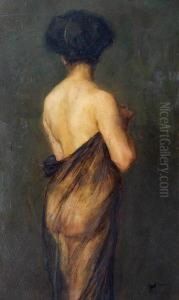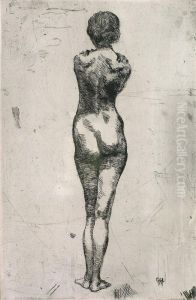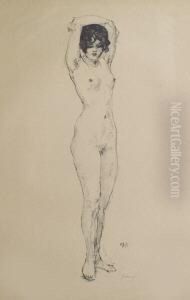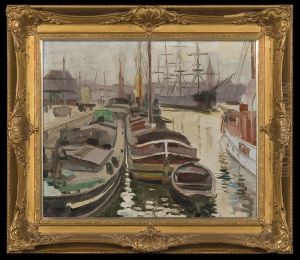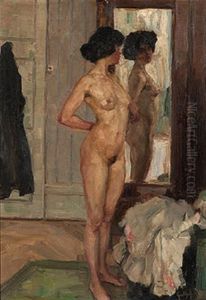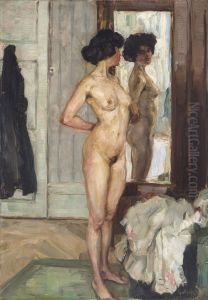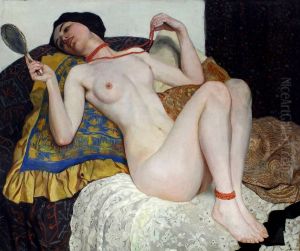Wilhelm Gallhof Paintings
Wilhelm Gallhof was a German painter and sculptor, born in 1878 in Iserlohn, Germany. He was an important representative of German Impressionism, a movement that sought to capture the fleeting effects of light and color in the natural world. Gallhof studied at the Kunstakademie Kassel (Kassel Academy of Arts) and later at the Kunstakademie Düsseldorf (Düsseldorf Academy of Arts), where he was influenced by the works of modern French painters, particularly the Impressionists and Post-Impressionists. His early work was characterized by a bright palette and a focus on landscapes, urban scenes, and later, on figures and portraits.
Throughout his career, Gallhof exhibited a strong preference for scenes of everyday life, imbued with a sense of immediacy and emotional depth. His paintings often depicted the leisurely activities of the bourgeoisie, capturing the ephemeral moments of joy and introspection. Gallhof's technique, notable for its loose brushwork and vibrant colors, was well-suited to these subjects, allowing him to convey the textures and movements of the scenes with a dynamic energy.
In addition to his paintings, Gallhof was also known for his sculptures, which, though less well-documented, showed a similar concern with form, light, and shadow. These works, while not as prolific as his painted oeuvre, further demonstrated his versatility and skill as an artist.
Wilhelm Gallhof's career was tragically cut short when he died in 1918 during the influenza pandemic, at the age of 40. Despite his relatively brief career, Gallhof left behind a body of work that has continued to be appreciated for its contribution to German Impressionism. His paintings, characterized by their luminosity and expressive use of color, remain celebrated for their depiction of the transient beauty of everyday life.
